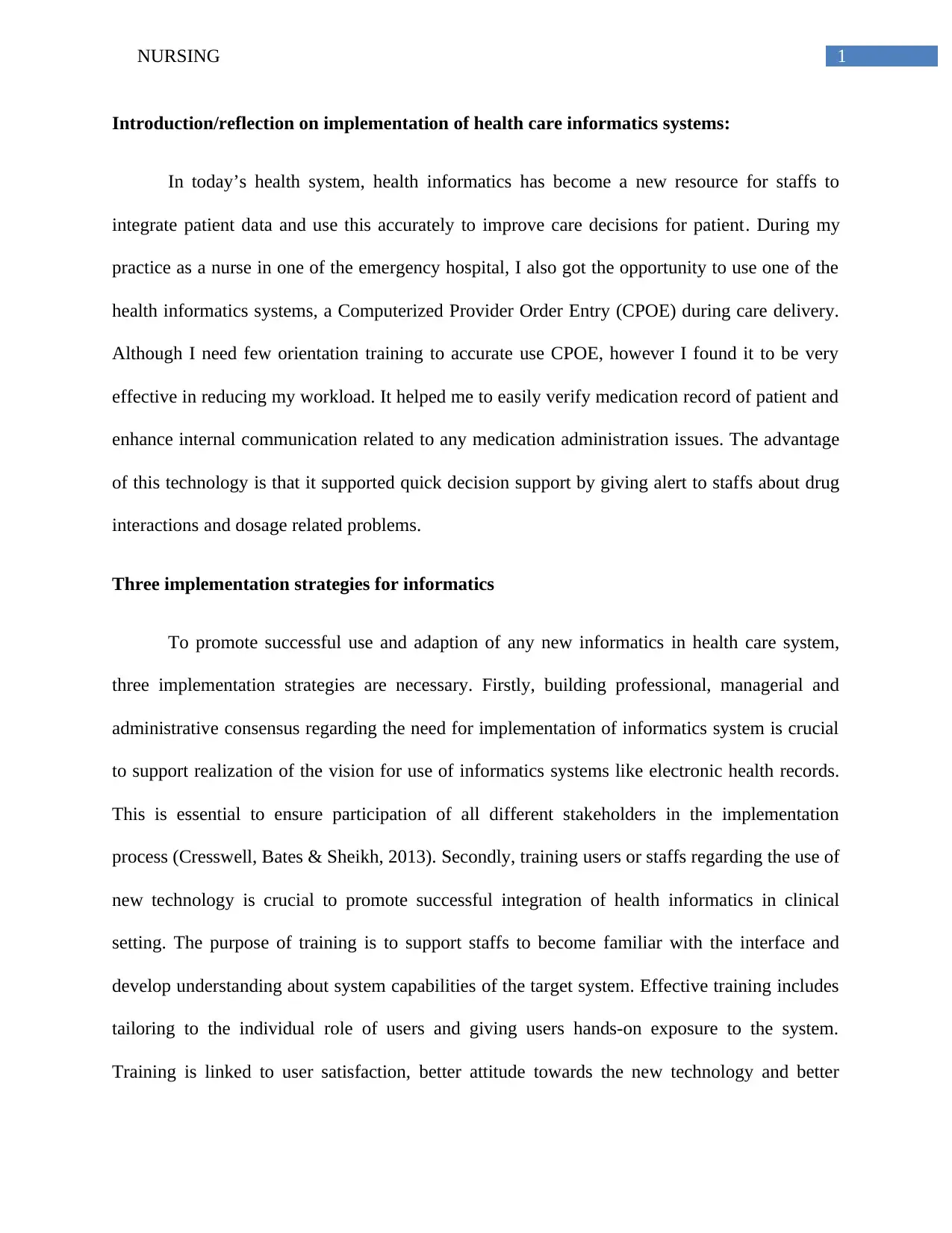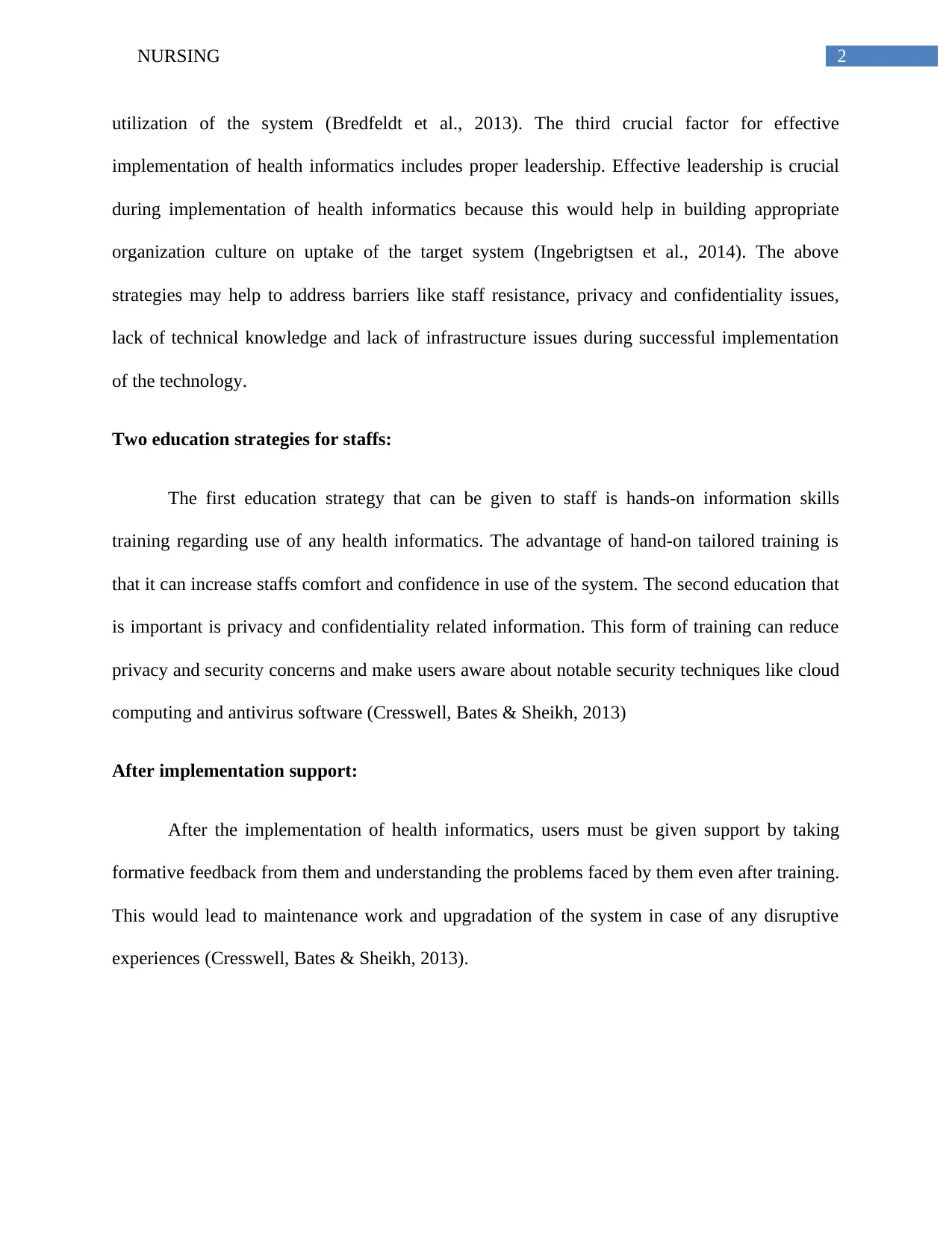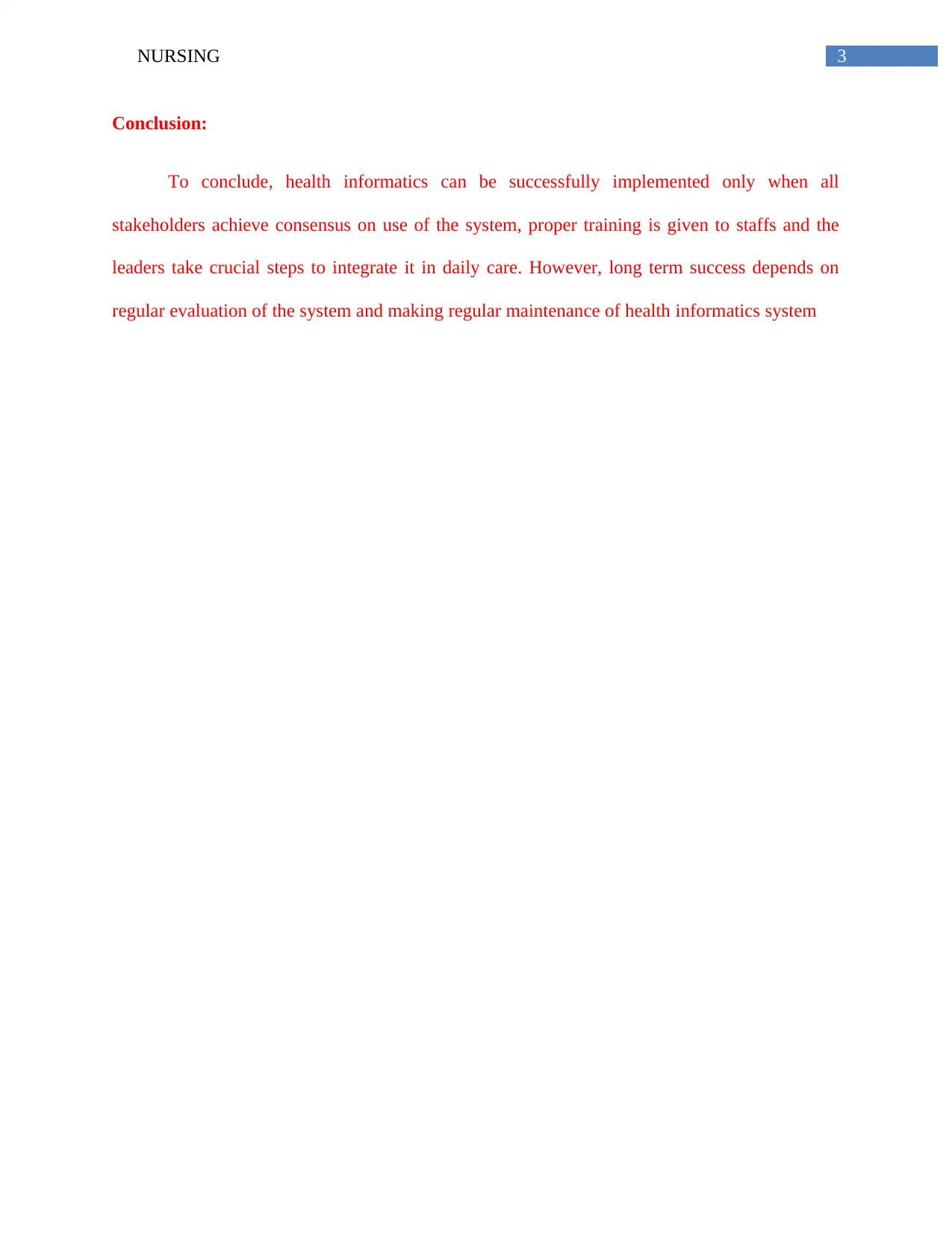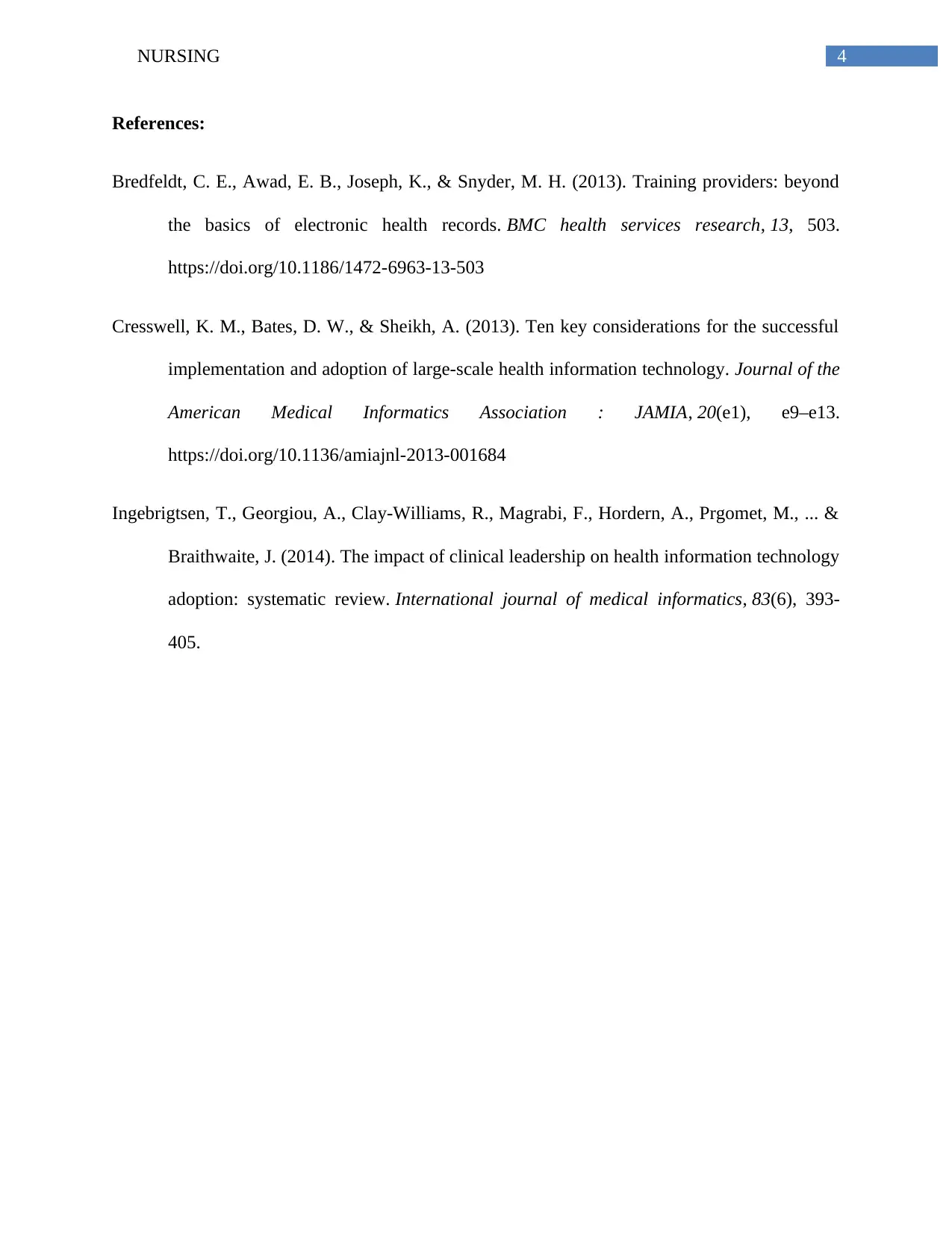Nursing Informatics Assignment: Healthcare Informatics Systems Report
VerifiedAdded on 2022/09/26
|5
|809
|20
Report
AI Summary
This report reflects on the implementation of healthcare informatics systems, specifically focusing on a Computerized Provider Order Entry (CPOE) system used in a clinical setting. It identifies three key implementation strategies: building consensus among stakeholders, providing comprehensive training to staff, and establishing effective leadership. The report also outlines two essential education strategies for staff, including hands-on training and education on privacy and confidentiality. Furthermore, it emphasizes the importance of post-implementation support through formative feedback and system maintenance. The conclusion highlights that successful implementation requires stakeholder consensus, proper training, and strong leadership. This paper also includes references from credible sources to support the arguments. The report provides a comprehensive overview of the challenges and opportunities in implementing health informatics systems in healthcare settings. The report also includes the use of APA guidelines.
1 out of 5












![[object Object]](/_next/static/media/star-bottom.7253800d.svg)